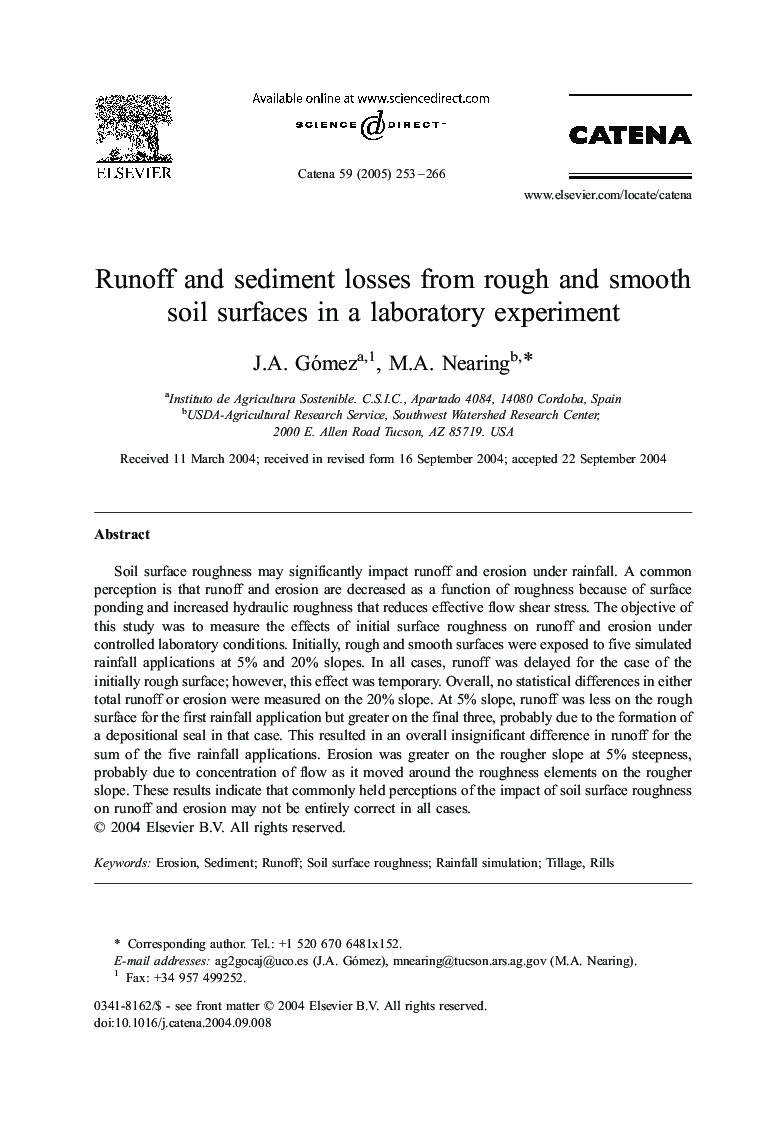| Article ID | Journal | Published Year | Pages | File Type |
|---|---|---|---|---|
| 9489953 | CATENA | 2005 | 14 Pages |
Abstract
Soil surface roughness may significantly impact runoff and erosion under rainfall. A common perception is that runoff and erosion are decreased as a function of roughness because of surface ponding and increased hydraulic roughness that reduces effective flow shear stress. The objective of this study was to measure the effects of initial surface roughness on runoff and erosion under controlled laboratory conditions. Initially, rough and smooth surfaces were exposed to five simulated rainfall applications at 5% and 20% slopes. In all cases, runoff was delayed for the case of the initially rough surface; however, this effect was temporary. Overall, no statistical differences in either total runoff or erosion were measured on the 20% slope. At 5% slope, runoff was less on the rough surface for the first rainfall application but greater on the final three, probably due to the formation of a depositional seal in that case. This resulted in an overall insignificant difference in runoff for the sum of the five rainfall applications. Erosion was greater on the rougher slope at 5% steepness, probably due to concentration of flow as it moved around the roughness elements on the rougher slope. These results indicate that commonly held perceptions of the impact of soil surface roughness on runoff and erosion may not be entirely correct in all cases.
Related Topics
Physical Sciences and Engineering
Earth and Planetary Sciences
Earth-Surface Processes
Authors
J.A. Gómez, M.A. Nearing,
